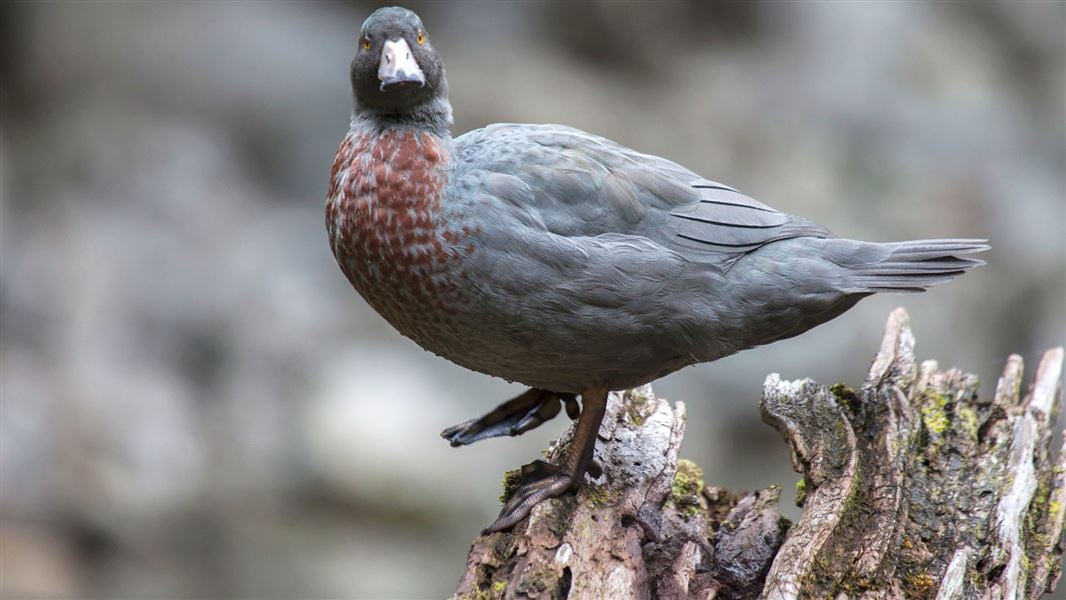
Introduction
A recent analysis has shown the number of whio/blue duck pairs across security sites where the birds’ population restoration work is underway have increased by 151% since 2011.Date: 15 July 2020
There are now 748 pairs of whio in security sites across New Zealand, up from 298 pairs found across the eight national security sites in 2011 when DOC and Genesis started working together to restore important populations of whio on awa across New Zealand.
Mark Davies, DOC’s Western South Island Operations Director and a member of the Whio Forever management committee says: “Even this year, with a drama-filled season of severe flooding which can wipe out nests on river beds and margins, a mega beech mast season and predator control delays due to Covid-19, the population has grown by 23 pairs.
“Whio nest in less than ideal places – under log jams and boulders, and at ground level, which makes them easy hunting for stoats, so this result is very fulfilling to everyone who has worked to restore whio populations.”
Nigel Clark, Executive General Manager Wholesale Operations for Genesis says it takes a community to raise a whio. “This incredible result is driven not only by the partnership between DOC and Genesis, but also through the hard work of many individual trapping enthusiasts, privately run trusts and businesses that hold whio breeding pairs, hatch whio eggs and raise their chicks.”
There are eight security sites across New Zealand where whio populations are managed intensively with predator control and breeding assistance programmes. These sights span from Te Urewera in the North Island to Fiordland in the South. You can find out more about the various places where whio are managed Whio Forever's website.
Background
More about whio
- The whio is a threatened species of native duck only found in New Zealand’s fast flowing waters. Featured on New Zealand’s $10 note and with an estimated nationwide population of less than 3000 birds, whio are rarer than kiwi.
- Whio are adapted to live on fast-flowing rivers so finding whio means you will also find fresh, fast-flowing water with a good supply of plants and underwater insects.
- This makes whio important indicators of ecosystem health – they only exist where there is quality fresh water and an abundance of life.
Whio Forever
- Genesis has a strong historic association with whio through the Tongariro Power Scheme and in 2010 this association grew through the establishment of Whio Awareness Month (March). The dates of this month have now shifted to better reflect the whio release season of mid-March to mid-April.
- Today, Genesis and DOC continue their partnership through The Whio Forever Project, which aims to secure the future of whio in the wild and ensure New Zealanders understand and value whio in our rivers.
- The support of Genesis and the work of DOC has enabled the Whio Recovery Plan to be implemented.
Conservation issue
- The whio are predated by stoats, ferrets and cats with the largest impact during nesting time when eggs, young and females are vulnerable, and also when females are in moult and can’t fly.
- Extensive trapping can manage these predators and work in key whio habitats by DOC and Genesis on the Whio Forever Project has already seen an increase in whio numbers.
- Whio cannot be moved to predator-free islands like other species because of their reliance on fast-flowing rivers.
- Pairs occupy approximately 1km of water – so they need a lot of river to sustain a large population and they fiercely defend their territories, which makes it difficult to put them with other ducks in captivity.
- They are susceptible to flood events which, destroy nests, fragment broods and wash away their valued food source.
Contact
For media enquiries contact:
Email: media@doc.govt.nz